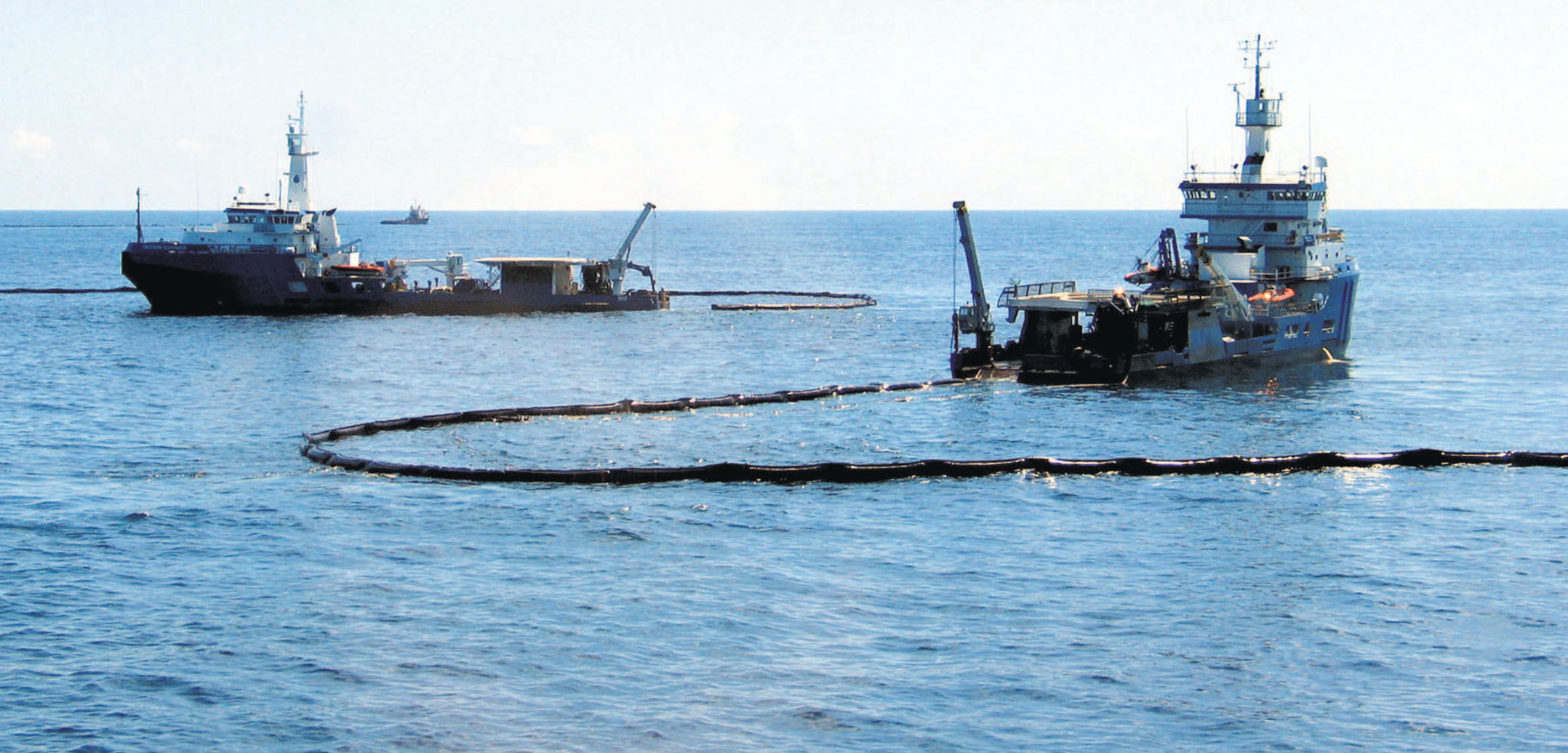
Khloi Rose Charles
May 24, 2016
Shrimp season starts off Louisiana shores on a steady keel
May 24, 2016whose purpose was to prevent similar disasters. While there is no doubt the moratorium was imposed because of the Deepwater Horizon blowout, Barbier reasoned that the moratorium was spurred by a determination that safety measures and checks in place were not adequate “and was motivated by perceived weaknesses of industry-wide safety measures.”
Meanwhile, non-financial tolls of the spill are still being counted and examined.
Last month, NOAA issued a report which said that an “increased number of stranded stillborn and juvenile dolphins found in the Gulf of Mexico from 2010-13 were likely caused by chronic illnesses in mothers who were exposed to oil from the Deepwater Horizon spill.”
A paper published in the journal Diseases of Aquatic Organisms is part of an effort to explain the unusual number of dolphin deaths in the Gulf between 2010 and 2014. The investigation continues, and the study says the long-term effects of the spill on dolphin reproduction is still unknown.
NOAA confirmed that bottlenose dolphins have been “dying in record numbers in their mothers’ womb or shortly after birth in areas affected by the 2010 Deepwater Horizon oil spill.”
“Our new findings add to the mounting evidence from peer-reviewed studies that exposure to petroleum compounds following the Deepwater Horizon oil spill severely harmed the reproductive health of dolphins living in the oil spill footprint in the northern Gulf of Mexico,” said Dr. Teri Rowles, veterinarian, co-au-thor of the study, and head of NOAA’s Marine Mammal Health and Stranding Response Program, which is charged with determining the causes of these events.
“In contrast to control populations, we found that Gulf of Mexico bottlenose dolphins were particularly susceptible to late term pregnancy failures, signs of fetal distress and development of in utero infections including brucellosis,” said Dr. Kathleen Colegrove, Ph.D., the study’s lead author and veterinary pathology professor at the University of Illinois Chicago-based Zoological Pathology Program.
Scientists saw higher numbers of stranded stillborn and juvenile dolphins in the spill zone in 2011 than in other years, particularly in Mississippi and Alabama. “The young dolphins, which died in the womb or shortly after birth, were significantly smaller than those that stranded during previous years and in other geographic locations,” said Dr. Stephanie Venn-Watson, study co-author and veterinary epidemiologist from the National Marine Mammal Foundation.
“Bottlenose dolphins carry their unborn young for about 380 days, so stillborn and juvenile dolphins found in the early months of 2011 could have been exposed in the womb to petroleum products released the previous year,” Colegrove said. “Pregnant dolphins losing fetuses in 2011 would have been in the earlier stages of pregnancy in 2010 during the oil spill.”
The researchers report that 88 percent of the stillborn and juvenile dolphins found in the spill zone had abnormal lungs, including partially or completely collapsed lungs. That and their small size suggest that they died in the womb or very soon after birth — before their lungs had a chance to fully inflate. Only 15 percent of stillborn and juvenile dolphins found in areas unaffected by the spill had this lung abnormality, the researchers said.
BP has maintained that the data the company has seen thus far “do not show that oil from the Deepwater Horizon accident caused an increase in dolphin mortality This new paper fails to show that the illnesses observed in some dolphins were caused by exposure to Macondo oil. In fact, numerous studies conducted over the last several decades have shown that respiratory illness — one of the conditions cited — is among the most common causes of death for bottlenose dolphins, including a study where half of the dolphins examined had pneumonia.”
Vessels conduct skimming operations in the Gulf of Mexico near the site of the Deepwater Horizon incident May 16, 2010. The Deepwater Horizon, a mobile offshore drilling unit, exploded April 20, 2010, and sank two days later.
Carl Pellegrin (left) of the Louisiana Department of Wildlife and Fisheries and Tim Kimmel of the U.S. Fish and Wildlife Service prepare to net an oiled pelican in Barataria Bay on June 5, 2010. The pelican was successfully netted and transported to a facility on Grand Isle for stabilization before being taken to Fort Jackson Oiled Wildlife Rehabilitation Center in Venice, La., for cleaning.
A stranded dolphin in March 2013. Young bottlenose dolphins have been dying in areas affected by the 2010 Deepwater Horizon oil spill.







